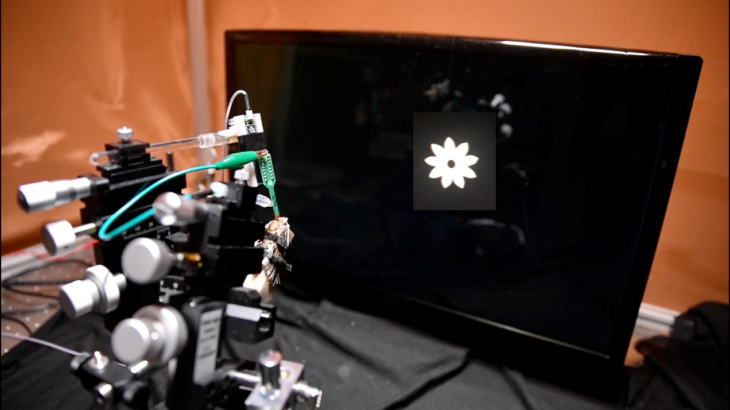The function of a visual system is to condense and transform patterns of light into a form that is meaningful to the rest of the brain and that can also be propagated to enable movement. Interestingly, how a moving visual scene is processed by the nervous system can look differently depending upon whether the animal is paying attention (McAdams and Maunsell, 1999), or moving (Chiappe et al., 2010). In both instances, the response is an increase in gain and a shift towards higher frequencies. In other words, when an animal is attentive or moving, it’s as though the volume of the nervous system response is turned up, and the animal perceives a faster-moving visual scene. How does an animal transition into these states of attention or locomotion? Can an external cue, like an odor, invoke this transition? To test this hypothesis, we considered the hawkmoth, Manduca sexta and partnered with Dr. Jordanna Sprayberry at Muhlenberg College. We presented moths with an ecologically-relevant odor and monitored their responses to visual motion stimuli. Our initial results suggest that an odor has similar effects to the previously reported cases of attention and locomotion. Odor increases the gain, and there is a shift towards higher frequencies. We also see evidence that odor may increase the precision of oscillating flower responses. Taken altogether, odor may function as a fine tuner to a moving visual scene and enable more precise object-motion tracking. Odor may function as a ‘behavioral switch’ that prompts the animal into an attentive, or locomotive state.
